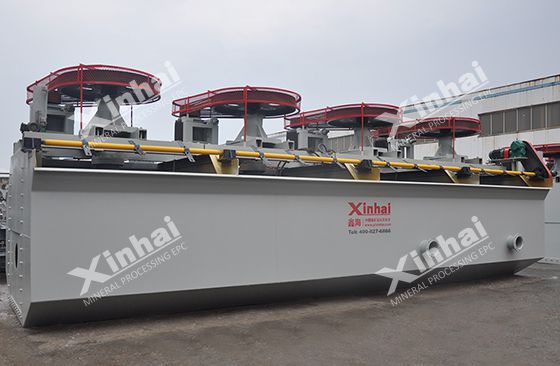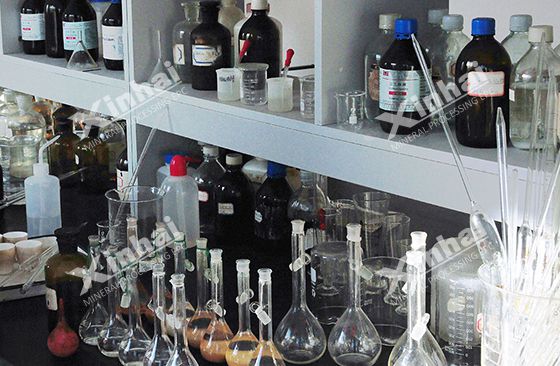
Chalcopyrite is a widely distributed copper-iron sulfide mineral, often containing trace amounts of gold, silver and other minerals, and is the main copper-containing mineral. Chalcopyrite has good self-induced flotability and collector-induced flotability, and has good hydrophobicity in weak alkaline and neutral environments, so the flotation separation is often used in selection processing. With the deepening of mining, low grade polymetallic refractory chalcopyrite has become an important source of copper ore. Now, let’s know the common chalcopyrite flotation processes together.
.jpg)
According to the property of the ore and the different requirements for the quality of the concentrate, the chalcopyrite flotation processes are generally divided into four types, including full priority flotation, partial priority-partial bulk flotation, bulk flotation, and equal floatable flotation process.
The full priority flotation process of chalcopyrite mainly includes two forms. One is to suppress associated minerals such as pyrite by adding lime or other inhibitors. Although this process can achieve good flotation results, the consumption of lime is relatively high, and may also reduce the grade of the copper concentrate and the recovery of copper and associated metallic minerals such as gold, silver and molybdenum. The other is to use reagents with high efficiency and selectivity to chalcopyrite, flotation of chalcopyrite under neutral to weakly alkaline conditions.
The full priority flotation process is suitable for ores with simple composition, few useful minerals to be recovered, large differences in flotation between useful minerals, or ores whose co-occurring minerals are well suppressed and have no significant effect on the flotation of chalcopyrite. The full priority flotation process is simple, easy to implement, and the coarse concentrate does not need to be re-grinded.

The partial priority-partial bulk flotation is to quickly separate the copper ore that is easy to separate by flotation, and then separate the copper and other useful minerals of the mixed concentrate by the bulk flotation process. After that, it should separate the mixed concentrate by the flotation separation, and combine or separate the copper concentrate according to the actual situation. This process is suitable for processing chalcopyrite which is easy to separate by flotation in the ore. It can separate copper fast and early when the grinding fineness is low. The difficult part of the ore can be recovered using the strong collector along with other minerals in the case of regrinding or no more grinding. This process can reduce the amount of reagents used, eliminate the influence of excess reagents on the flotation separation, and improve the flotation index, but it requires more flotation equipment to match the application of the process flow.

The bulk flotation is to first separate chalcopyrite and other useful minerals in the ore, and then adopt the process of preferential flotation of copper and inhibit other minerals to obtain qualified copper concentrate. This process is suitable for chalcopyrite with low grade and simple properties, which has the characteristics of saving grinding costs, flotation reagents and flotation equipment. Besides, it can avoid over-grinding during regrinding and improve flotation indexes. However, there are also some problems such as difficult separation between useful minerals and low-grade concentrate.

The equal floatable flotation process is suitable for polymetallic chalcopyrite ores. Usually, the ore that can be separated by the equal floatable flotation process requires the presence of a mineral with good flotability, and other ore components can be divided into easy and difficult flotation components. This flotation process usually does not need to add media regulators, and only relies on the flotability of minerals. The chalcopyrite minerals with good flotability can naturally float up without being affected by inhibitors, and at the same time, it avoids the problem that useful minerals affected by the activator float up with chalcopyrite and consume a lot of reagents and equipment for mineral flotation. This process generally can obtain good technical indicators, use less reagent, and simplify flotation equipment.
.jpg)
The above are four commonly used chalcopyrite flotation processes. The flotation process is flexible in application. When used to process chalcopyrite, its index is subject to the properties of ores, the choice of reagents and other factors. Before choosing the chalcopyrite flotation processes, it’s better to conduct a processing test to obtain the ideal index and investment benefits, avoiding economic losses and resource waste.
To find out more about our products and solutions, please fill out the form below and one of our experts will get back to you shortly.